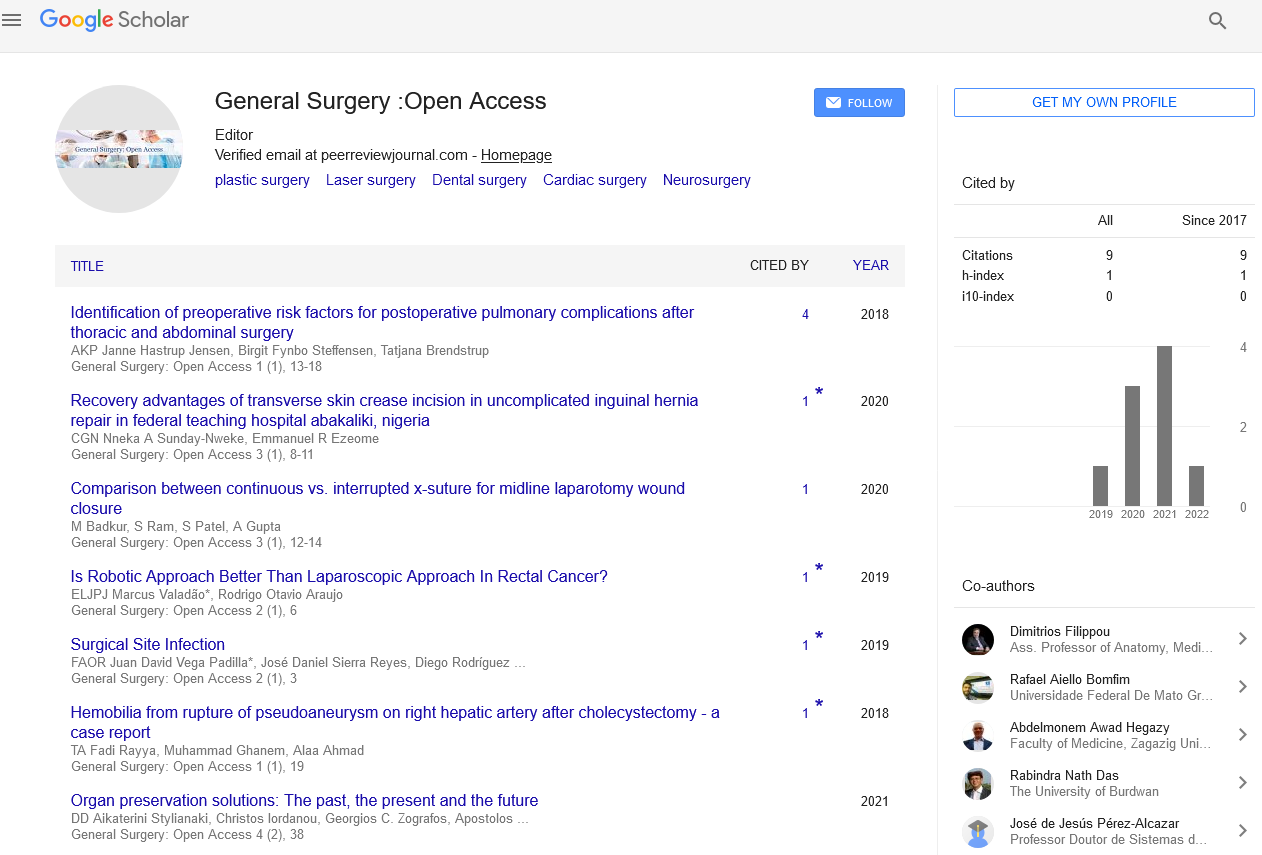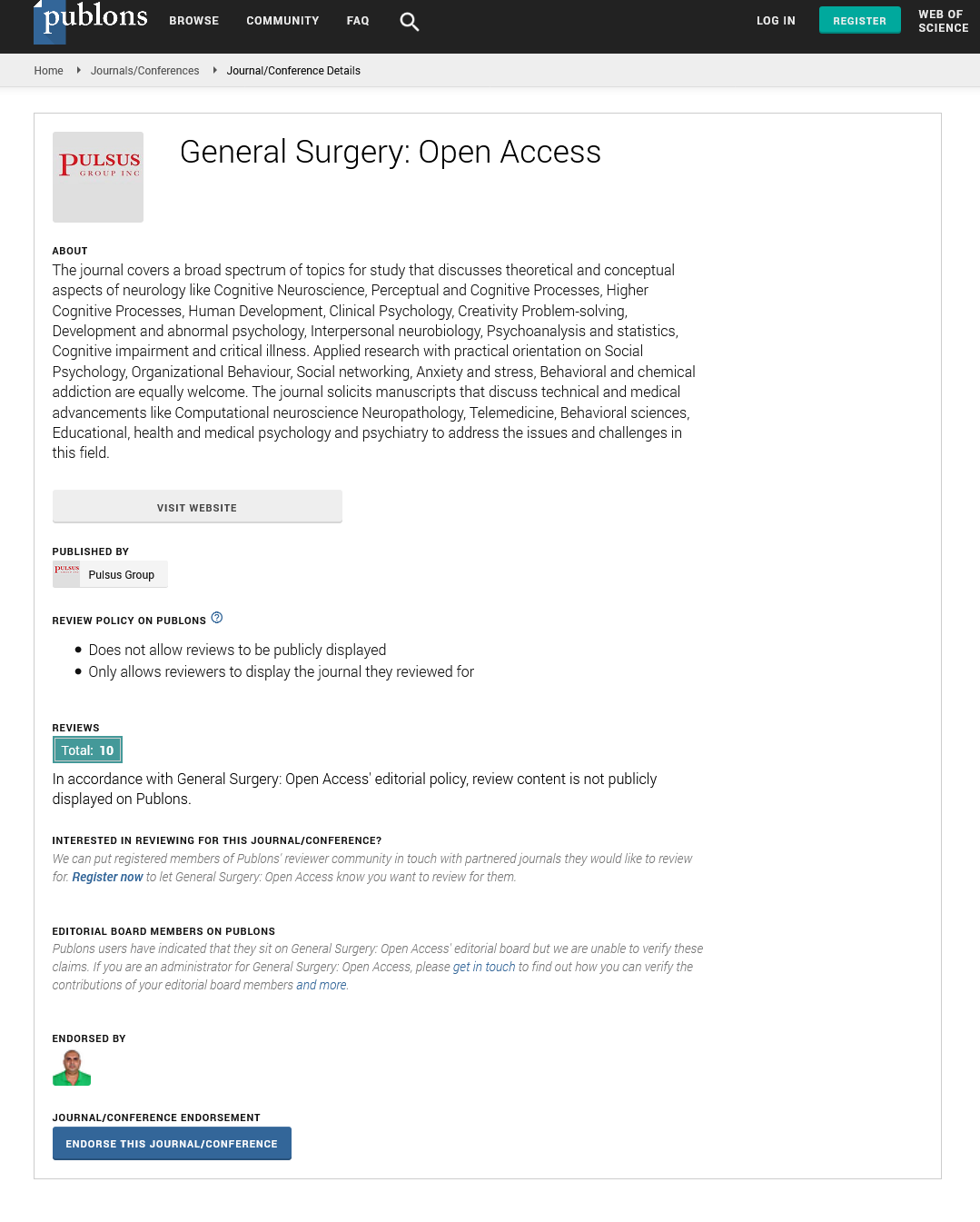Importance of cardiac surgery
Received: 03-Jan-2021 Accepted Date: Jan 17, 2021; Published: 25-Jan-2021
Citation: Ali B. Importance of cardiac surgery. Gen Surg: Open Access. 2021;4(1):5.
This open-access article is distributed under the terms of the Creative Commons Attribution Non-Commercial License (CC BY-NC) (http://creativecommons.org/licenses/by-nc/4.0/), which permits reuse, distribution and reproduction of the article, provided that the original work is properly cited and the reuse is restricted to noncommercial purposes. For commercial reuse, contact reprints@pulsus.com
Description
Open-heart surgery is any quite surgery during which a surgeon makes an outsized incision (cut) within the chest to open the skeletal structure and operate the heart. "Open" refers to the chest, not the heart. Depending on the sort of surgery, the surgeon also may open the heart. Cardiopulmonary bypass was developed after surgeons realized the limitations of hypothermia in cardiac surgery: Complex intracardiac repairs take time, and the patient needs blood flow to the body, as well as heart and lung function. Coronary artery bypass grafting, also called revascularization may be a common surgery to make an alternate path to deliver blood supply to the heart and body, with the goal of preventing clot formation. This can be wiped out some ways, and therefore the arteries used are often taken from several areas of the body. Arteries are typically harvested from the chest, arm and then attached to a portion of the coronary artery, relieving pressure and limiting clotting factors in that area of the heart. As an alternate to open-heart surgery, which involves a five- to eight-inch incision within the chest wall, a surgeon may perform an endoscopic procedure by making very small incisions by a camera and specialized tools are inserted. Recovery from open-heart surgery starts with about 48 hours in an intensive care unit, where heart rate, blood pressure, and oxygen levels are closely monitored. Chest tubes are inserted to drain blood throughout the heart and lungs. After discharge from the hospital, compression socks could also be recommended so as to manage blood flow. Heart transplant surgery is a last resort in case of impending heart failure and is recommended only in the most severe of situations. In case of cardiomyopathy that cannot be corrected by minor procedures or implantation of a medical device or in cases of irreparable birth defects of the heart, a heart transplant surgery is suggested by the doctor. This approach requires a donor and heart recipient to match blood and tissue types, despite which the heart transplant surgery requires the use of anti-rejection drugs to ensure that the received heart is taken up by the recipient body. Pediatric heart surgery refers to heart surgery procedure that is performed on a child who may be born with heart defects, or at some stage, has acquired one. Pediatric cardiac surgery is an especially sensitive process in infants, but has become safer over time, offering a high rate of success. This may involve a heart transplant surgery, or sometimes a closed heart surgery where the rib cage does not need to be cut open, but an incision is made between the ribs. Complications are possible after a heart surgery is carried out, and the risk of heart surgery complications varies from patient to patient. Open heart surgery recovery time can be a stressful period, overall recovery will take a few weeks to a few months, based on care provided post-operation, genetic preclusion of heart disease, post-operative stresses in life that might hamper open heart surgery recovery by countering its benefits, and consistent care towards lifestyle and overall wellbeing. Conclusion: The future of cardiac surgery hinges on the surgeon's ability to improve techniques, innovate in therapies, and diversify practice. However, personal development and education often slow or cease altogether after completion of training with reluctance of some experienced practitioners to learn new techniques.






